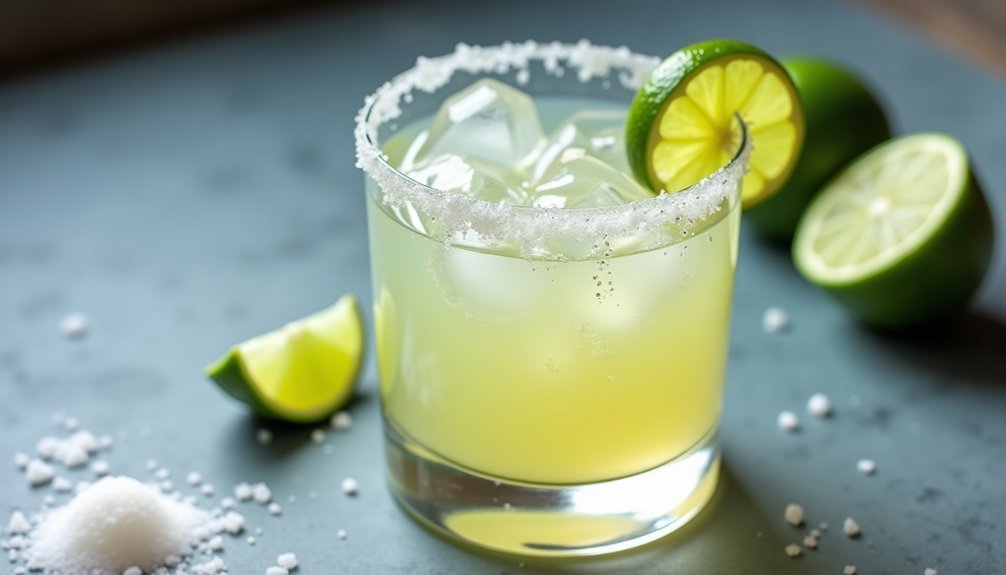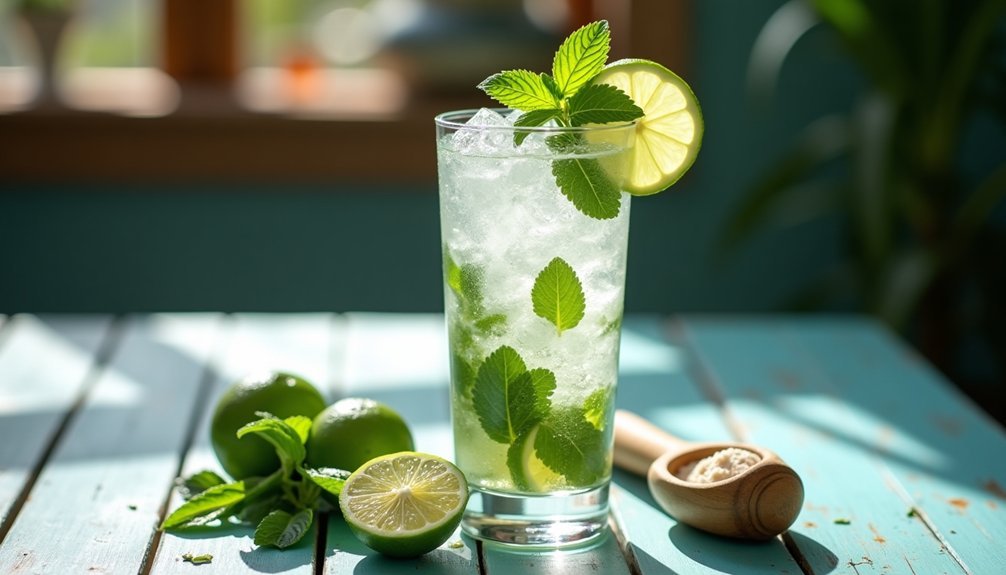I’ve always believed there’s something magical about the Negroni—that perfect balance of bitter, sweet, and herbal notes dancing together in a glass. It’s a cocktail that speaks to simplicity yet delivers complexity with every sip. Just three ingredients in equal parts, but oh, what those ingredients can do together! If you’ve never experienced the ruby-red elegance of this Italian classic, you’re in for a treat. Ready to discover why bartenders worldwide consider this their go-to cocktail?
What Ingredients are in Classic Negroni?
The classic Negroni is a perfect balance of bitter, sweet, and strong flavors that has stood the test of time. This elegant yet simple cocktail relies on just three main ingredients in equal parts, plus a garnish that adds an aromatic touch.
When I think about what makes a Negroni special, it’s this beautiful harmony of components that creates something greater than the sum of its parts.
- 1 oz London dry gin
- 1 oz Campari
- 1 oz sweet vermouth
- Orange peel for garnish
What makes the Negroni ingredients so interesting is their quality really matters. The gin provides the backbone, so a good London dry style works best with its juniper notes.
Campari can’t be substituted—it’s the signature bitter element that gives the cocktail its distinctive ruby-red color and complex flavor. For the sweet vermouth, fresher is always better (it does oxidize over time), and storing it in the refrigerator after opening helps preserve its nuanced flavors.
And don’t skip that orange peel garnish! Those citrus oils expressed over the top aren’t just for show—they bring a bright, aromatic dimension that completes the drink.
How to Make this Classic Negroni

Making a perfect Negroni is all about technique and timing—and thankfully, it’s much simpler than many other cocktails. Start by gathering your three equal parts: 1 oz London dry gin, 1 oz Campari, and 1 oz sweet vermouth. You’ll need a mixing glass (though any sturdy glass will do in a pinch), a bar spoon, and a strainer.
Fill your mixing glass about three-quarters full with ice—large, clear ice works best as it melts more slowly, preventing over-dilution of your cocktail.
Now comes the important part: the stir. Add all three ingredients to your ice-filled mixing glass and stir gently but deliberately for about 30 seconds, which should give you roughly 30 rotations with your bar spoon.
Why stir instead of shake? Stirring creates the perfect level of dilution while maintaining the drink’s signature silky texture and crystal-clear appearance.
Once properly chilled, strain the ruby-red mixture into a rocks glass with fresh ice—I prefer one large cube for minimal dilution, but regular ice cubes work perfectly well.
The final touch, which elevates the drink from good to exceptional, is expressing the oils from a fresh orange peel over the surface of the drink. Just hold the peel skin-side down, give it a firm twist over the glass, run it around the rim, and then drop it into the drink.
Those aromatic oils create a beautiful sensory experience before you even take your first sip.
For consistent, professional results at home, investing in a premium cocktail set will dramatically improve your Negroni-making experience.
Substitutions and Variations
While the classic Negroni formula stands as a perfect balance of flavors, you’re certainly not bound to these exact ingredients when crafting your own version at home.
I love seeing how small tweaks create entirely new experiences.
Try substituting bourbon for gin to make a Boulevardier, or white vermouth for sweet to create a Negroni Bianco.
Not a Campari fan? Aperol offers a sweeter, less bitter alternative that’s quite approachable.
For a lower-alcohol option, consider adding a splash of soda water or using Cocchi Americano instead of Campari.
The possibilities? Nearly endless, my friend.
What to Serve with Classic Negroni
Three perfectly paired foods can elevate your Negroni experience from merely delightful to absolutely sublime.
I’m obsessed with serving salty, umami-rich snacks that complement the cocktail’s bitter-sweet profile.
Marinated olives, preferably warmed with orange peel and fennel seeds, create a perfect echo of the drink’s citrus notes.
Isn’t that clever?
Aged Parmesan chunks, broken not cut (trust me, the rough edges make all the difference), provide creamy contrast to the Campari’s punch.
Lastly, thinly sliced prosciutto, draped casually on warm crostini, balances the gin’s herbaceous qualities with its savory depth.
Final Thoughts
Beyond these perfect pairings, the beauty of a Negroni lies in its remarkable simplicity and adaptability.
Three ingredients, equal parts, one brilliant cocktail. I’m constantly amazed how such a straightforward recipe delivers such complex flavors.
Don’t be afraid to make it your own. Prefer it a touch less bitter? Dial back the Campari.
Want something bolder? Try a high-proof gin.
What matters most is quality ingredients and proper technique.
That gentle stir, the right dilution, the fresh orange oils—these details transform good into extraordinary.
A Negroni isn’t just a drink; it’s a century-old tradition in a glass.



